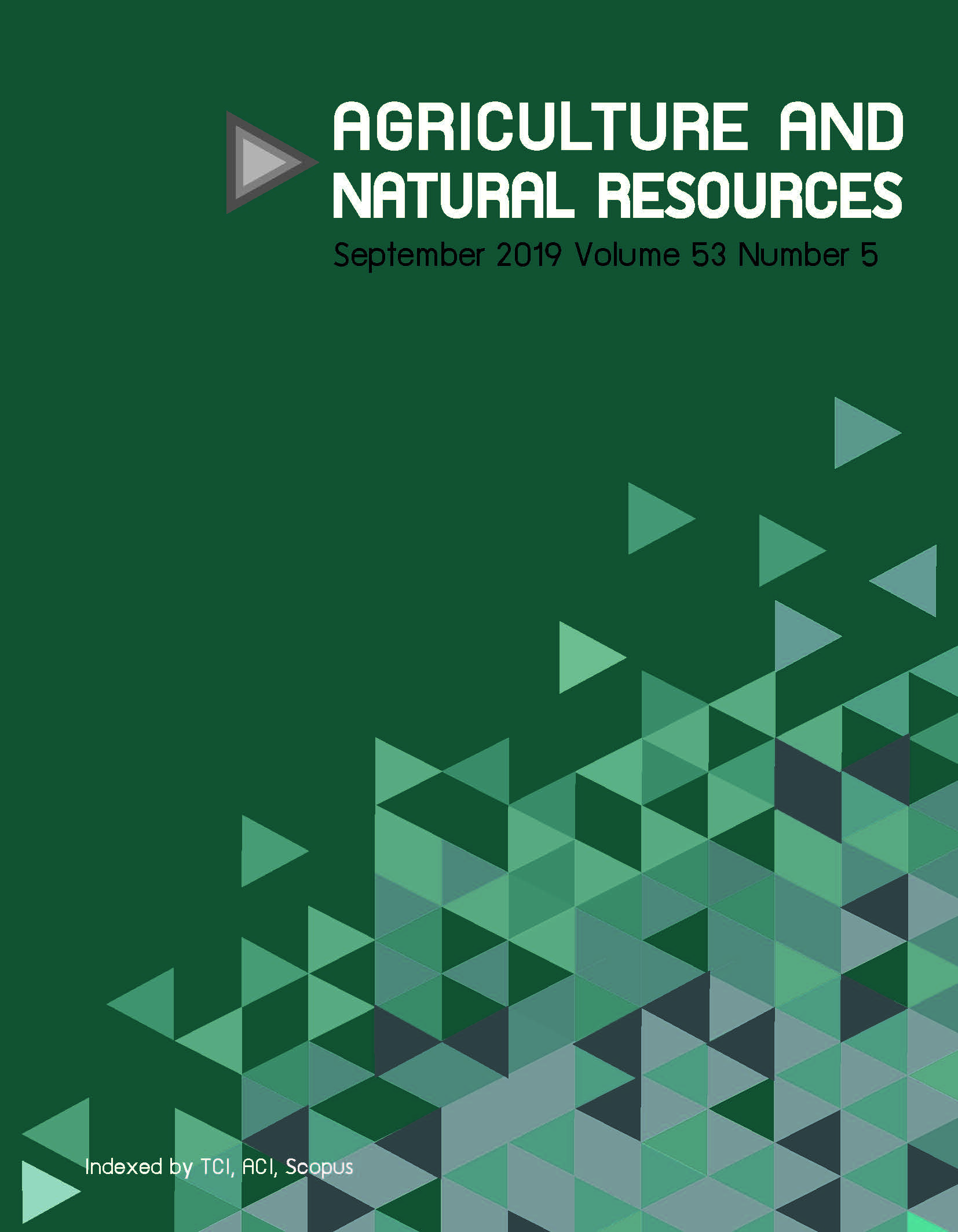Effect of infrared ray drying on seed infection and seed germination of paddy
Keywords:
Panicle disease, Infrared radiation, Oryza sativa, Rice seed, Seed contaminationAbstract
The effect was studied of infrared ray (IR) drying as an alternative method for seed disinfection of freshly harvested paddy cultivar RD47, collected from Suphan Buri province, Thailand. Paddy seeds were treated using a laboratory gas-fired infrared dryer at IR temperatures of 40−45°C, 60−65°C and 80−85°C on the surface of the paddy seed. Afterward spore germination was tested of four fungi: Alternaria padwickii, Bipolaris oryzae, Curvularia lunata and Fusarium semitectum. An in vitro test of IR treatment at 80–85°C was able to inhibit spore germination of the four fungal pathogens of paddy while IR treatment at 40–45°C and 60–65°C did not have an effect on treated spores. In the in vivo test, the effect of IR on seed infection and the germination of paddy was investigated compared with shade drying (control). The artificially inoculated paddy with the four fungal pathogens and non inoculated paddy were treated with IR at 40–45°C and 65–75°C. The results revealed that IR drying reduced seed infection of A. padwickii, B. oryzae and F. semitectum. The germination rate of inoculated paddy treated with 40–45°C IR was 91.0–94.8% which was higher than for 65-70°C IR and the control. The results of the in vivo test showed that IR significantly decreased natural infection by A. alternata and B. oryzae after IR drying at 40−45°C. Seed infection of A. padwickii, C. lunata and F. semitectum rapidly decreased after IR drying at 65−70°C. However, IR drying at 40−45°C and 65−70°C of paddy reduced seed germination to 85.1 and 79.5%, respectively.
Downloads
Published
How to Cite
Issue
Section
License

This work is licensed under a Creative Commons Attribution-NonCommercial-NoDerivatives 4.0 International License.
online 2452-316X print 2468-1458/Copyright © 2022. This is an open access article under the CC BY-NC-ND license (http://creativecommons.org/licenses/by-nc-nd/4.0/),
production and hosting by Kasetsart University of Research and Development Institute on behalf of Kasetsart University.







